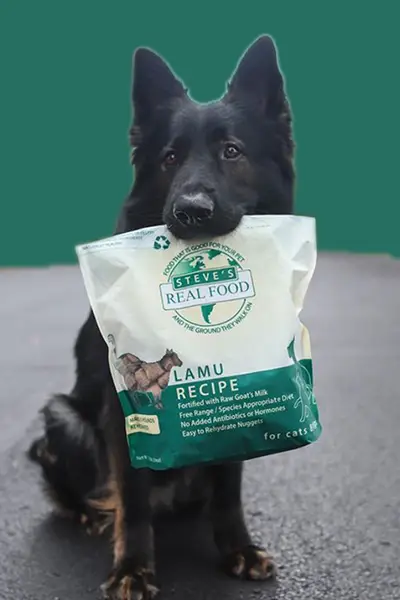Have you ever heard the phrase ‘Look what the cat dragged in?’ Well, what about ‘what the cat coughed up?’ Most cats will occasionally throw up a hairball. However, if you find yourself cleaning up these unpleasant wads of hair more often than once or twice a year, your cat may be at risk of health problems like intestinal blockages. Here’s what you need to know about hairballs.
What Are Hairballs?
A cat hairball is a small wad of loose fur that your cat throws up. You may find them on floors, furniture, or across your shoes if your cat isn’t fond of you. In some ways, they look like sticky dust bunnies. What’s happening here? Your cat’s tongue is covered in tiny hooks. When a cat grooms himself, any loose or shed hair is caught on those hooks. The cat then swallows the hair. This usually isn’t a problem. Small amounts of hair pass through the digestive system and end up in the litter box. However, if too much hair accumulates in your cat’s stomach, it forms a clump. This clump cannot be passed normally and is typically vomited out as a hairball.What Causes Cats to Get Hairballs?
Vets used to believe that hairballs were only caused by shedding. Longer-hair breeds like Persians and Maine Coons were well known to be more prone to hairballs. However, short-haired breeds could also get hairballs. While there is a link between shedding and hairballs, other factors are also at work here. Your cat’s behavior and health can contribute to developing hairballs. Does it seem like your cat’s grooming himself too much? This could be a sign of a greater problem. Allergies and skin issues can cause a cat to ‘scratch’ himself by licking and biting the area. This leads to eating more of the pulled-out fur and developing hairballs. Some cats also over-groom themselves as a reaction to stress and neurological conditions. If you think that your cat is grooming too much, schedule a checkup with your vet. Another problem area lies with your pet’s gut microbiome. Just like with humans, cats have a microbiome of healthy microorganisms in their gut. Studies have indicated that if a cat’s microbiome gets out of balance, their digestive system becomes less efficient. The fur they swallow may not pass through as it should. Instead, it will build up in the stomach until the cat has to vomit up a hairball to get rid of it.How to Treat Hairballs
If you’re concerned about your cat coughing up hairballs, tackle the root of the problem. Start by making sure that your pet is well hydrated. This includes 24/7 access to fresh water. Some cats prefer to drink from moving water. In this case, you may want to try a pet drinking fountain. You can also add warm water to his food. Next, regularly groom your cat as this will gently loosen and remove shed fur. Choose a brush meant for your cat’s fur length. You may want to groom your kitty daily for a long-hair and several times a week for a short-hair. When you’re looking for a cat hairball remedy, avoid any that contain petroleum. Instead, use all-natural products such as those with papaya, marshmallow, or coconut oil. Your vet may also have a recommendation for a safe and effective hairball treatment for cats.Control Feline Hairballs With the Right Cat Food
What your cat eats can make a big difference in whether they develop hairballs or not. Ingredients and the overall quality of the hairball control cat food are key here. The right cat food mimics what cats evolved to eat in the wild. This means meat, not filler material like grains. A grain-filled kibble puts the cat’s digestive system under stress. The effort of digesting grains like corn can trigger a host of issues. These include hairballs and changes in the gut biome. What about if you put your cat on a meat-based diet? Premium cat food with meat as the first ingredient (like pork, etc) and organ meats (like liver) as the first three ingredients. These foods are easy to digest, rich in fats that lead to coat health, and are high in necessary nutrients and amino acids. Put together, all of this means that the cat is healthier and will shed less hair. In general, you’ll want to avoid dry kibbles and choose moist to wet foods. Why? A low moisture diet based on dry food causes chronic dehydration and alkaline urine, leading to urinary tract inflammation. It also slows digestion. Meanwhile, a moist diet based around meat sources leads to smooth, healthy digestion and less fur shedding, therefore, fewer hairballs.Ingredients to Avoid:
- whole-grain wheat
- corn gluten meal
- soybean meal
- wheat gluten
- rice flour
- whole-grain corn
- other grains slipped in as cheap filler
Ingredients to Look For:
- unsaturated fatty acids from animal sources
- meat as one of the first ingredients such as chicken, pork, etc
- organ meat such as turkey necks, heart, etc
- added animal-derived omega-3 supplements like krill oil
 Beef
Beef Chicken
Chicken Whitefish
Whitefish Pork
Pork Lamb
Lamb Turkey
Turkey Turducken
Turducken All Protein
All Protein Beef
Beef Chicken
Chicken White Fish
White Fish Pork
Pork Lamb
Lamb Turkey
Turkey Duck
Duck All Products
All Products Frozen Raw Pet Food
Frozen Raw Pet Food
 Freeze Dried Raw Pet Food
Freeze Dried Raw Pet Food
 Frozen Prey Diet
Frozen Prey Diet
 Freeze Dried Protein Bites
Freeze Dried Protein Bites
 Frozen Quest
Frozen Quest
 Freeze Dried Quest
Freeze Dried Quest
 Eggs over Easy
Eggs over Easy
 Steve's Merch
Steve's Merch 
















